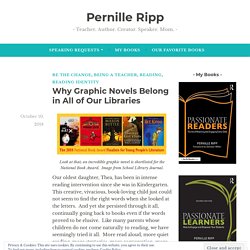

A Brief History of Comics and Graphic Novels. This is the first article of our new series on comics and graphic novels.

Be sure to catch the next two articles in February and March. The new season of How to Fall in Love with Classics, the literary programme series by Dr Gwee Li Sui, poet, artist and literary critic will debut this month focusing on graphic novels. For more information and registration, click here. What comes to mind when you think of comics? When I was growing up, my diet of comics comprised comics strips from the newspaper (I loved Peanuts and Garfield), Archie comic books, volumes of Tin Tin and Asterix, Beano and Dandy magazines, and Lao Fu Zi which I got to read whenever I visited my cousins. Aesthetically, the artwork is quite different from the juvenile comics I was used to as a kid, and the themes and subjects more similar to literary non-fiction I read as an adult. This is the first article of our new series on comics and graphic novels.
'Graphic novels' is not comics. July 3rd, 2018By Indira Neville I care about comics.

I read comics, make comics, edit comics, and sometimes I write about comics. I also work in a library and every day in order to get to the toilet, I have to walk past a bunch of comics with a ‘graphic novel’ sticker on their spine. It’s the ‘graphic novel’ collection. Treat Graphic Novels Like Books (Because They Are) This post is sponsored by Flatiron Books, Publisher of American Dirt by Jeanine Cummins.

También de este lado hay sueños. On this side too, there are dreams. Lydia Quixano Pérez runs a bookstore in the Mexican city of Acapulco. She has a son, Luca, and by and large, they live a fairly comfortable life. But when Lydia’s wonderful journalist husband publishes a tell-all profile of Javier, the jefe of the newest drug cartel, Lydia and eight-year-old Luca are forced to flee. You’d think this debate would have resolved itself by now. It hasn’t. Graphic Novels Are Comic Books, But Gentrified.
Walk into almost any bookstore today and you’ll find an aisle dedicated to a peculiar hybrid — the graphic novel.

Combining fantasy with fine art, highbrow concepts with lowbrow caricature, graphic novels are neither literary novels, nor do they necessarily contain any graphic content. While they sometimes rival their literary forebears for length and seriousness, many of them don’t even tell fictional stories — take the example of Art Spiegelman’s Holocaust memoir Maus or Alison Bechdel’s Fun Home.
Put simply, graphic novels are comic books — or, more precisely, ‘what comics have become in an age of gentrification. This formerly popular medium now wins Pulitzer Prizes and American Book Awards, is exhibited at the Museum of Modern Art in New York, and adapted into arthouse films that include the animated Persepolis and the Palme d’Or winner Blue Is the Warmest Color.
Yet important to understand, here, is the fact that more grassroots changes often preceded neoliberal policy measures. Graphic Novels: Suggestions for Librarians - National Coalition Against Censorship. NCAC provides this guide as a resource for librarians.

We will make updated copies available as changes are made. If you have suggestions, or would like to request a printed copy, please email us © 2006 Prepared by The National Coalition Against Censorship, The American Library Association, & the Comic Book Legal Defense Fund Introduction Graphic novels are one of the fastest growing categories in publishing and bookselling. While comics are published as magazines, their “grown up” version – the graphic novel – appears in book format.
Narratives composed out of visual images or out of images and words have a very long history – a history that stretches back to the first cave paintings. Parents. My 10-year-old's pet-sitting earnings were burning a hole in her pocket, and the only place she wanted—no, "needed to go," she told me—was our local independent bookstore to pick up more graphic novels.

At the store, as she held up her selections, I half-heartedly gestured to the other shelves filled with the kinds of books I read as a child. "How about one of those? " I asked, muttering something about the importance of developing the stamina to read longer books with more words. My daughter opted to do her part to build her growing graphic novel collection instead.
She bought three. I'm not the first person to fret over their child's choices in the aisles of our favorite bookstore, Quail Ridge Books in Raleigh, North Carolina. RELATED: I'm a Mom With a Ph.D. in Reading: Here's How I Get My Kids to Love Books Why Kids Love Graphic Novels Despite their popularity, graphic novels have long carried a stigma. Dog Man #7: For Whom the Ball Rolls by Dav Pilkey Courtesy of Scholasticc. A Friendly Reminder that Comic Books Count as Reading. “You can’t have those,” the man said to his son, nodding his head towards the stack of comic books the boy had grabbed from the library’s shelves. “Why not?” The boy asked. Why Graphic Novels Belong in All of Our Libraries. Our oldest daughter, Thea, has been in intense reading intervention since she was in Kindergarten.

This creative, vivacious, book-loving child just could not seem to find the right words when she looked at the letters. And yet she persisted through it all, continually going back to books even if the words proved to be elusive. Like many parents whose children do not come naturally to reading, we have seemingly tried it all. Comics Count as Reading. A place on the bookshelf for graphic novels. Why comics belong in the classroom.